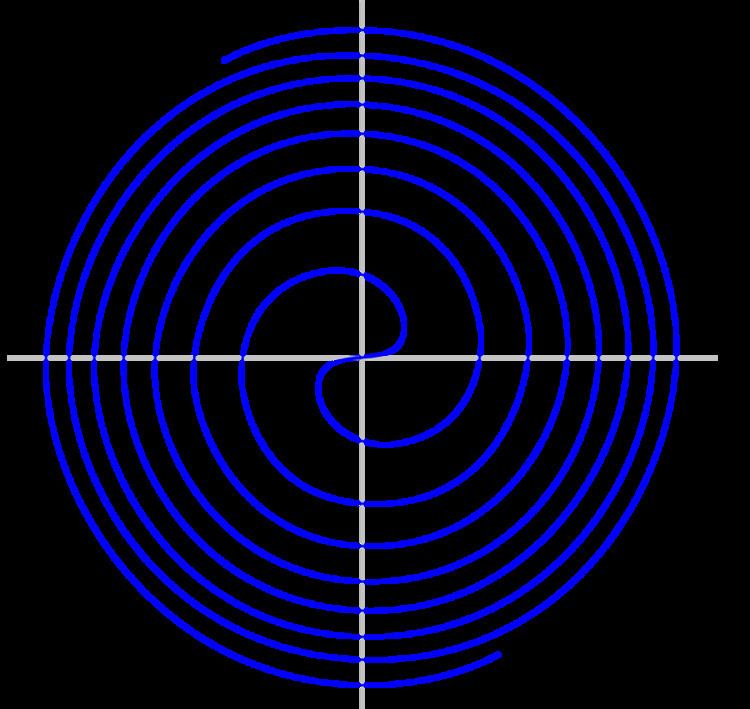 | ||
Fermat's spiral (also known as a parabolic spiral) follows the equation
in polar coordinates (the more general Fermat's spiral follows r 2 = a 2θ.) It is a type of Archimedean spiral.
In disc phyllotaxis, as in the sunflower and daisy, the mesh of spirals occurs in Fibonacci numbers because divergence (angle of succession in a single spiral arrangement) approaches the golden ratio. The shape of the spirals depends on the growth of the elements generated sequentially. In mature-disc phyllotaxis, when all the elements are the same size, the shape of the spirals is that of Fermat spirals—ideally. That is because Fermat's spiral traverses equal annuli in equal turns. The full model proposed by H Vogel in 1979 is
where θ is the angle, r is the radius or distance from the center, and n is the index number of the floret and c is a constant scaling factor. The angle 137.508° is the golden angle which is approximated by ratios of Fibonacci numbers. Fermat's spiral has also been found to be an efficient layout for the mirrors of concentrated solar power plants.
